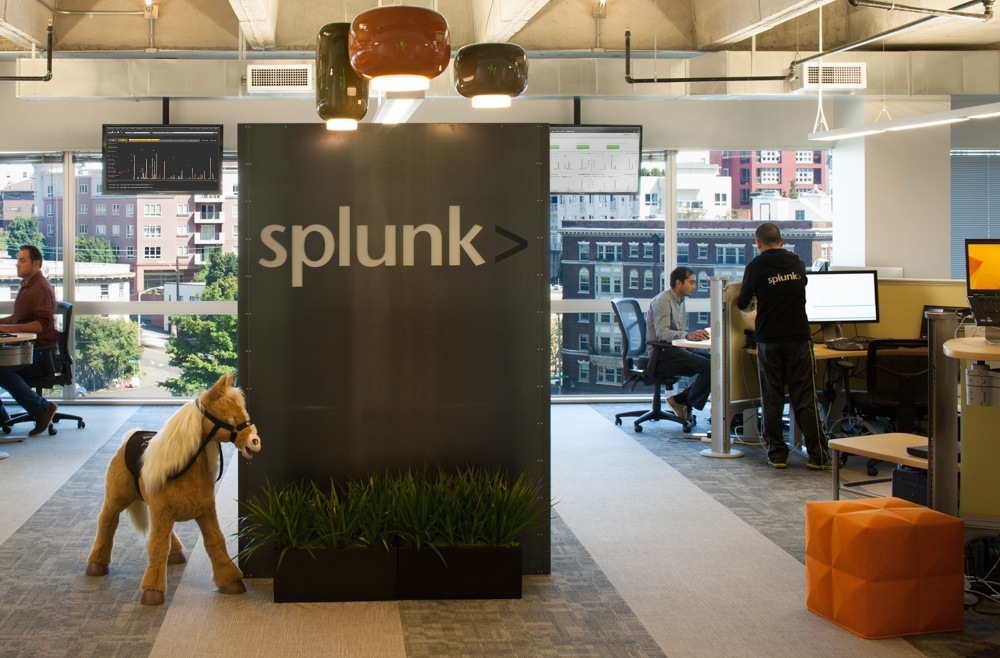

Splunk migration to Tableau Cloud eliminates server admin overhead and drives better dashboard performance
Saved $300K/year in server and platform administration costs by migrating to Tableau Cloud
Saw 2x improvement in dashboard performance, plus a seamless integration with Salesforce CRM workflows
Projected to double Tableau adoption from 1,000 users today to 2,000 users by the end of 2021
San Francisco-based Splunk provides a customized “Data-to-Everything Platform” for companies in every industry, empowering its clients to realize transformation in their security, IT, and DevOps initiatives. Splunk uses SaaS based Enterprise Data Warehouse solution powered by Amazon Web Services (AWS) to acquire, integrate, organize data from multiple business applications.
Historically, Splunk has used Tableau Server as the visualization engine for creating easy-to-use, filterable dashboards that allow internal teams to examine all analytics. Adoption of Tableau was so fast at Splunk that it soon proved difficult for server capacity and performance to keep up with the rate of growth. Splunk wanted to reduce server administrative burdens (like software upgrades, security patches, and so on) across all of its platforms and properties, including not just Tableau, but Linux and Amazon Web Services as well. As a cloud-first, fully software-as-a-service company themselves, Splunk knew the benefits of a cloud-based product like Tableau Cloud (powered by AWS) was an attractive solution to ease their scalability woes.
“Centralizing and eliminating administrative tasks was a key driver for our migration,” says Raj Seenu, Senior Director of Data Technologies at Splunk. “In the case of Tableau Cloud, we no longer have to designate an IT Ops person or data engineer to manage the platform—those experts can now spend more time on other activities.”
Centralizing and eliminating administrative tasks was a key driver for our migration. In the case of Tableau Cloud, we no longer have to designate an IT Ops person or data engineer to manage the platform—those experts can now spend more time on other activities.
By migrating to Tableau Cloud, Splunk not only decreased these administrative inefficiencies for its visualization workflows, but also greatly increased the speed and scale of its data processing, thanks to the compatibility of Tableau Cloud with AWS and various architectural improvements the team made to streamline data operations. “With Tableau Cloud,” says Seenu, “we're now saving more than $300,000 per year in server and platform administration costs over the previous Tableau Server-based solution, and our dashboard performance has improved by a factor of 2x.”
Splunk kept its Tableau Cloud migration orderly and efficient by using a straightforward, four-step process:
- Prepared the environment using impact assessments and setting up a testing site.
- Engaged Tableau professional services teams to assist with content migration and user/group management.
- Maintained constant communication throughout the migration with users and stakeholders via training and office hours.
- Established a sandbox test site for user acceptance testing, including feedback from power users of the platform.
The entire migration happened over two days, with zero downtime as users were connected to the old platform right up to the time the new one was ready. At the end of the migration, Splunk designed and followed strict protocols and best practices for ongoing governance of the new cloud-based platform, including checklists, certifications, role-based data access, and a Center of Excellence to help the Splunk community with questions and issues related to adoption.
“Setting up user governance is key to a successful project, whether it's a migration or starting from scratch,” says Adrian Rios, Senior Business Intelligence Analyst at Splunk. “Our migration to Tableau Cloud benefited greatly from having a thoughtful, easy-to-execute governance model to work with.”
Migration has led to other benefits, as well. Cross-domain identity management and multifactor authentication capabilities in Tableau Cloud enable enhanced data access and security, and the roadmap includes plans to integrate Tableau reporting with the company's Salesforce CRM. Meanwhile, Splunk continues to gain solidarity and credibility with its customers by prioritizing its investment in cloud technologies—a credo Splunk is always advising to them as a modern best practice.
“Having Tableau in the cloud like our other properties is a real asset for us,” says Seenu. “We get all the benefits of scalability and hands-off administration, and it demonstrates to our customers that we truly are cloud-first.”
Having Tableau in the cloud like our other properties is a real asset for us. We get all the benefits of scalability and hands-off administration, and it demonstrates to our customers that we truly are cloud-first.